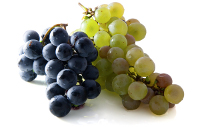As the largest wine producer in the world, France manufactures up to eight millilon bottles per year. The rules surrounding winemaking are strict, with many falling under a protected destination of origin – they can only be produced in the specific area in which they originated. The most well-known of these is probably champagne, which comes only from the Champagne-Ardenne region, but certain vins de table that you may recognise as exports also fall under this category: Vin de Pays d’Oc, for example, hails from Languedoc-Roussillon, and Vin de Pays de Méditerranée is made only in the South-East, predominantly Provence and Corsica.
When you tell people you’re about to move to France, the subject of wine will almost invariably come into the conversation. It’s a central part of French culture and one of the country’s main exports; in 2012, a record income of 10.1 billion Euros came from wine and spirits alone. And with consumption within France itself dropping by nearly 20 percent, producers are relying more and more on foreign exports. What better way to boost the local economy, then, than to set off on a tour of some of the country’s finest wineries?We begin in the South, in Languedoc, home of the Vin de Pays d’Oc that remains popular around the world. Wineries in the South of France are generally more liberal when it comes to wine production, unafraid to innovate and open to trying new things. This of course means that the drinks are constantly improving, so it’s always worth a visit to see what the latest Languedoc wines have to offer.
Vinipolis in Florensac is a friendly, interactive wine centre that describes itself as ‘non-snobby’. Tasting sessions are held alongside computer terminals which describe the theme of the wines, and you’ll find both local and international wineries represented. If you’re looking for something a little more traditional, try Mas de l’Oncle or one of the Caves or Châteaux; there are plenty of places to suit all palettes.
Bordeaux is another area known for its wine production, and one of its most acclaimed wineries is the Château Haut-Marbuzet, which has been in operation since the 18th century. Covering 150 acres of land, the vineyard produces Cabernet Sauvignon, Merlot and Cabernet Franc wines. And if you find that none of the wines produced here are to your liking, it’s sandwiched between two other producers: Château Cos d’Estournel and Château Montrose, both of which are also worth a visit.
Creeping north, we come across Rhône and the Loire Valley, both producers of some of France’s finest wines. Rhône offers thirteen different wine trails, including the intriguingly named ‘Pope’s Enclave’ or ‘Sepia Trail’, covering part of the Drôme département. Cave Les Coteaux de Visan and Le Cellier des Templiers are two highly atmospheric wine cellars that demonstrate the history of wine production in Rhône.
The Loire Valley boasts a whole range of wines, but perhaps one of the more unusual is a sparkling wine produced only in Saumur Mousseux. The caves of Saumur have been used in winemaking for centuries and a tour around them will help to bring some of Loire’s most famous wines to life.
No Loire wine tour is complete without a visit to Chenon, where we come across Couly-Dutheil, calling itself “the most prestigious Chinonais winery.” A family-run business founded in the early 1900s, Couly-Dutheil specialises in red and rosé wines, and boasts a couple of Brut de Francs that look like they’re well worth a taste. If you’re after a Chinon Blanc, try Jean Maurice Raffault in Savigny en Veron. Founded in 1693, the vineyard is still going strong and tasting sessions are held on an appointments-only basis.
Close by, in Bourgogne, the Châteaux d’Etroyes boasts an enviable Chardonnay vineyard that is open to the public seven days a week. Complete with the prerequisite caves and beautiful fields, there’s surely no better place to down a glass of crisp white wine and toast the French sun.
Travelling a bit further North-East, we come across Domaines Schlumberger, whose name betrays its Swiss affiliations. Situated in Alsace and with a beautiful view over the Alps, this two hundred year old vineyard prides itself on growing, creating and producing everything within its walls. Tradition is well respected here, and visitors can see many of the original walls still standing, with walkways that have been trodden for many years. Four horses are used to transport grapes from vineyard to cave, where they are fermented and the wine is left to rest for up to nine months before bottling.
Of course, no wine tour of France would be complete without a visit to Champagne. Unsurprisingly, the largest wine cellars in the region belong to Moët & Chandon in Eparnay. Stretching for over seventeen miles, the cellars are open for tours and tasting on weekdays in winter, and seven days per week from March to November.
If you’re looking for a smaller, family-run champagnerie, look no further than Taittinger, founded by Pierre Taittinger shortly after the First World War. The winery boasts nine different types of champagne which can be tasted all year round. Taittinger also has a summer house in the nearby village of Hautvilliers, where visitors can stay for a few days and taste champagnes at their leisure.
Have you visited any of the wineries mentioned? Perhaps we’ve missed one out? Let us know in the comments.

